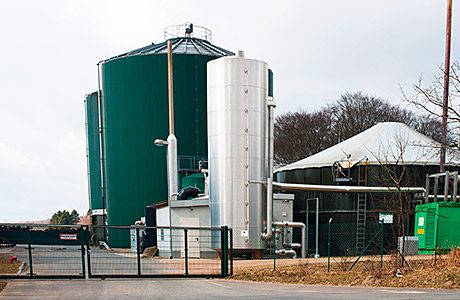
IN March local campaigners succeeded in blocking plans to build an energy-from-waste plant in Ramsbottom in the Greater Manchester area.
Concern over the smell and proximity of the plant to local housing provided the principle objections to the proposed facility, an AD processing plant intended to handle around 450,000 tonnes of food waste per year. But to what extent are such odour concerns justified? And how might developers deal best with odour from AD plants?
“There’s a lot of bad public perception about AD plants because they’re relatively new, and people assume odour will be a problem,” suggests Jeffrey Redmore of REC. Organic waste left uncovered for any length of time will naturally start to biodegrade, creating “an over-emission problem”, he says. “But this means the operator is not really doing their job.” He adds: “With a food waste plant, there’s certainly more potential for odour. But as long as the feedstock material is kept in sealed buildings, it needn’t be an issue.”
Having looked at the Ramsbottom case, Redmore suggests the companies behind it had done a lot of technical work on the odour aspects. Normally such a proposal would undergo some kind of environmental impact assessment, including air quality odour assessment. With the latter there will generally be some effort to model odour emissions, feeding data about the plant and the local area into a computer model, looking at how the odour might be dispersed. A sensitivity analysis, incorporating worst-case scenario emissions, normally provides quite a full picture.
Avoiding AD bellyaches
Pete Badham of Air Spectrum, who is also a member of a couple of the ISO working groups looking at the standards surrounding emissions and odours, says that, in terms of AD plants potential for odour problems, it “really does depend upon location and local environmental conditions. The feedstock for the facility also plays its part.” On the whole the process is the same in all AD plants but it “can go out of control easily,” he says. “The AD is basically an ‘animal’ which you have to look after. Overfeed it and its gets belly ache, underfeed it and it dies, don’t keep an eye on it and it will run amok.”
Mark Burston of Enviro Technology Services (ETS) says the stack monitoring of waste processing plants generally produces clean results – and here there are clear EA restrictions to be adhered to – but problems may arise with things like lorries bringing feedstock materials onto a site.
But if this is handled competently, with lorries admited to indoor areas via automatic doors on arrival at a site, for example, there shouldn’t be a problem. He cities the Global Renewables waste processing plant in Lancashire which he has visited. “I’ve been there when its 25ºC and not whiffed anything.”
In France there are mandatory monitoring requirements around industrial premises, for substances like hydrogen sulphide, VOCs, ammonia and mercaptans. This creates a strong market for products such as those offered by ETS – sensitive instrumentation for real-time monitoring of odours. But the UK appears to have a more relaxed regime, with companies taking action on odour abatement often only as a result of pressure from local authorities or local campaign groups.
Odour abatement and AD
Asked if is there much call for the use of odour abatement techniques around AD plants, Badham says: “Absolutely, but this really relates to uncontrolled or unexpected emissions.” He adds: “It is the fugitive odours than can cause issues. In my experience, good housekeeping pays dividends to the operators, but not everyone keeps an eye on this aspect.”
As to the question of which odour abatement techniques are best suited to AD, Badham says: “In all honesty, this depends upon the odour/emission in question and is a little more complicated than you might think. AD had been around for years, and so have certain types of odour control, unfortunately though, AD technology is running faster than odour control and new methods are running to catch up.”
Certain classic odour abatement techniques have been in use for a number of years, but is the field progressing noticeably? Badham suggests there haven’t been any ground breaking ideas over the past couple of years, although all that can change, noting that there are a couple of emerging technologies out there which promise great things – though he is cautious about getting too excited.
Redmore suggests biofiltering is often an appropriate solution for AD, in his experience. Also used in small-to-medium sized sewage treatment plants, it relies on the use of microorganisms to digest the odour-causing compounds. Carbon filtering is also used with AD – a more expensive approach but one offering a higher level of odour abatement.
Badham says: “Biofilters are a biological process, and sometimes the smell going in is consumed very well, but not everyone likes the smell coming out. In fairness though, biofilters and carbon have their place, the main problem is cost. Carbon is more expensive and needs to be replaced over a shorter period than the bio media in a bio filter. Although, as with any process, control is the key to success: Fit and forget never works and the problem will just come back.”
As for what to look for in a supplier, Badham suggests: “I look for experience in a supplier, or at least a good knowledge of the service or process. Accreditation is fine if you need to jump through the bureaucratic hoop, but if I am looking for a supplier who can give me the best solution, then experience often wins!”






